

GPU prices have finally normalized.
Over the past few years, the GPU market has been a rollercoaster ride, marked by erratic price fluctuations and persistent supply shortages.
As of January 2022, the situation remained largely unchanged, with GPU prices continuing their unpredictability. However, as the months progressed, a noticeable shift began to emerge, and by March 2022, there were promising signs that the market was slowly regaining its equilibrium.
By the time July 2022 rolled around, we started seeing evidence that prices had finally normalized. Fast forward a year, and we find ourselves in the present day with consistent pricing trends finally established on Jawa and in the market at large.

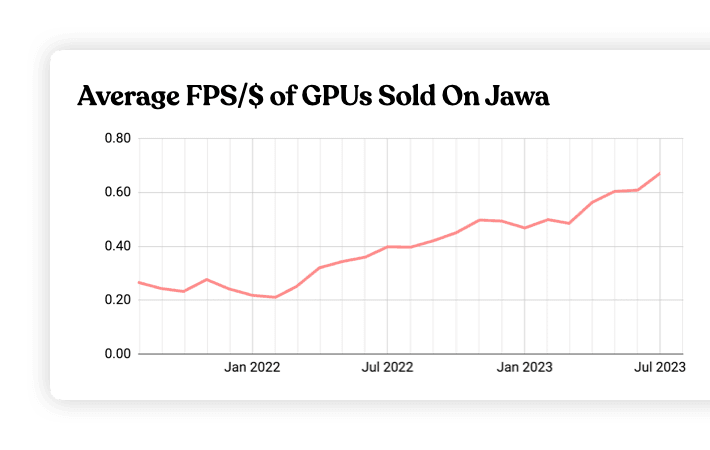

Breakdown by Brand…

All the major GPU brands follow the market trend of price normalization in the past year.
The most consistently priced brand is MSI, which fluctuates less than 25% month over month (a different story from the 400% + fluctuations we saw in 2021).

Breakdown by Series...
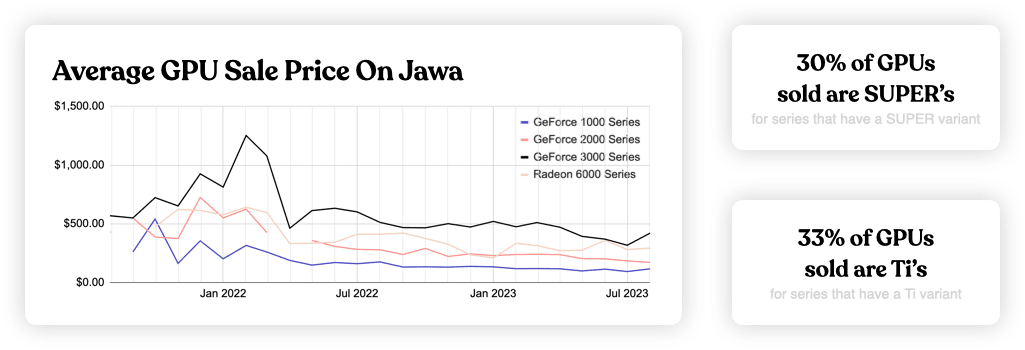
Even in early 2022, GPU prices were so volatile that different series often weren’t even priced appropriately relative to each other. At least part of that was due to shortages, meaning there might be a month where only a few basic 2060s were available and the only 1000 series GPUs in the marketplace were 1080 Ti’s. As the market has gradually found its footing, pricing has converged to a point where logical comparisons between series can now be drawn.
GPU Pricing by Chipset, July 2023
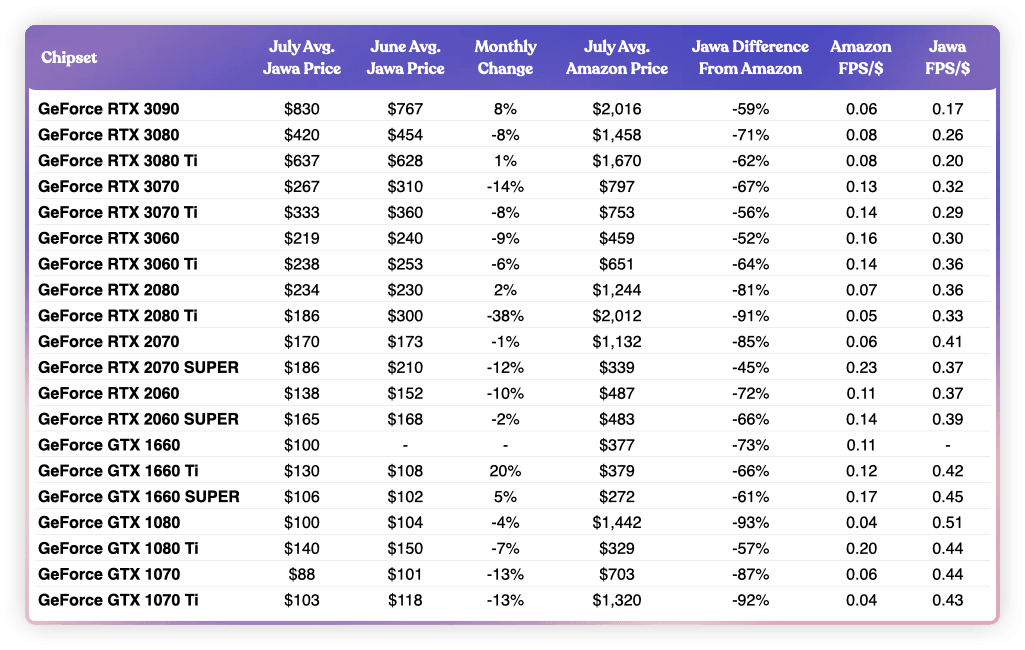
Even though GPU prices have normalized across the board, not all cards are created equal. Buying a used card vs a brand new one can save you an insane amount of money, especially if you look towards older GPUs like a 2000 series or even a 1000 series from NVIDIA.
The FPS bang for your buck on used cards is one of the biggest selling points. Look at something like a 2080 Ti. It’s a great card that can handle most games at a high frame rate with ease. Getting one used, especially from a site like Jawa with high quality stock and buyer protections, means you’re getting more than 6x the FPS for your dollar.
Customers who get a used GPU through Jawa get 4X the FPS/$ on average than people who buy brand new.

Who Buys
GPUs?
Who Sells
GPUs?
81%
GPU is their first purchase on Jawa
For lots of gamers, GPUs are their gateway to buying used PC parts and gaming hardware. That has remained true in 2023 despite the normalization of GPU prices.
GPU buying is happening across the US, but is concentrated in the same states where PC buying is highest.

80%
of GPU sellers only sell occasionally to upgrade
There is a small group of sellers, roughly 5%, who focus heavily on GPUs and sell dozens each year. Roughly 15% of GPU sellers are small time sellers and may sell a few per year.
The other 80% of the market is made up of gamers upgrading their PC or building a new one.
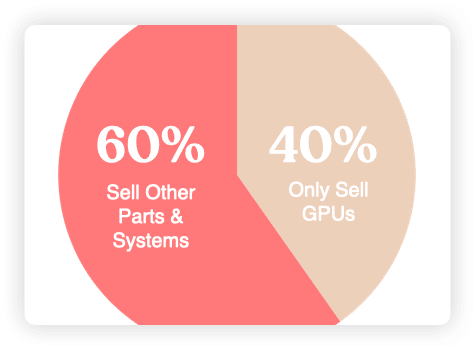
The Popularity Contest
Brand
Sells fastest: NVIDIA
Bought most often: MSI
Traded in most often: EVGA
Chipset
Sells fastest: Geforce GTX 980 Ti
Bought most often: GeForce RTX 3070
Traded in most often: GeForce RTX 3070
Variant
Sells fastest: Ti variants
Bought most often: Base variant
Traded in most often: Base variant
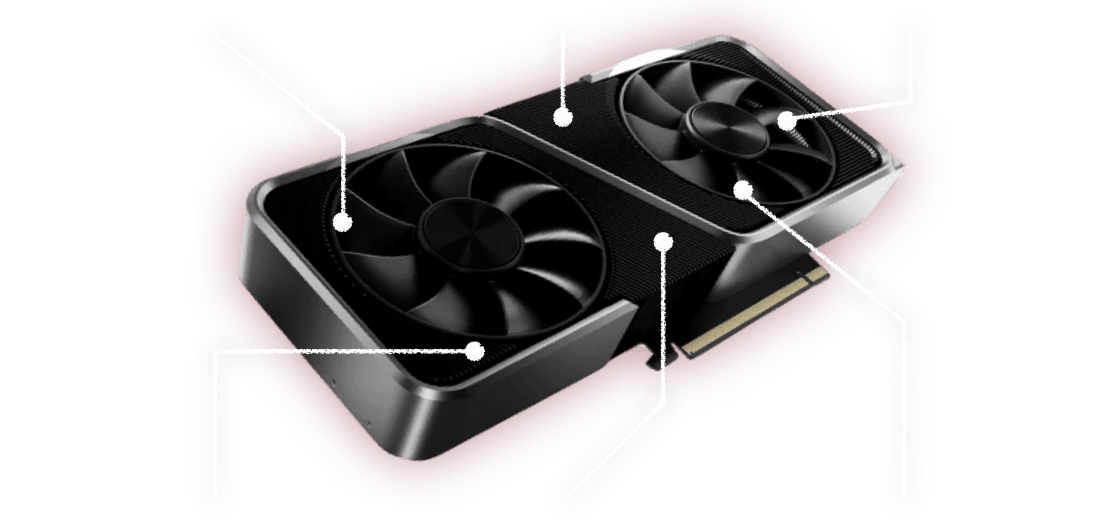
Condition
Sells fastest: Used
Bought most often: Used
Performance
Sells fastest: 130 fps avg. at 1080p
Bought most often: 160 fps avg. at 1080p
Memory
Sells fastest: 11 GB
Bought most often: 8 GB
Ready to find your next graphics card? Grab one here on Jawa.
(Don’t forget to trade in your old GPU for cash with us first)

Where do our numbers come from?
All of the data for GPU prices on Jawa comes directly from the Jawa marketplace. It is just anonymized sales data that we hope is helpful to other gaming hardware nerds like us.
We also layer in data from a few other sources. The current Amazon pricing is taken directly from Amazon. We used the pricing from more than 600 GPU listings on Amazon to find the averages. To get the average FPS for each card, we used the benchmarks from Tom’s Hardware’s GPU Hierarchy.





